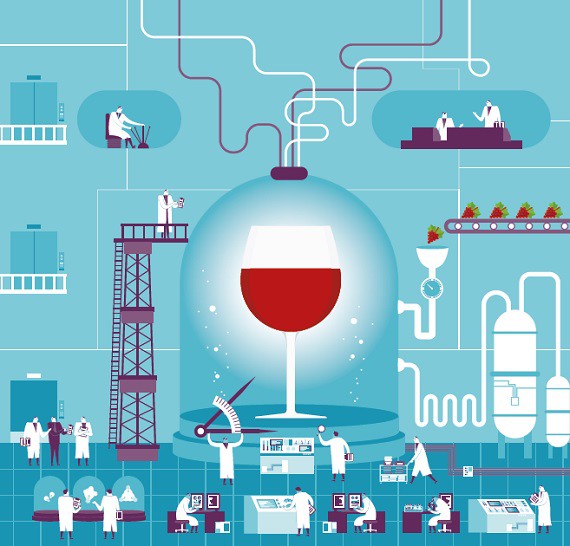________________________________
WINE ENJOYS A PRIVILEGED place at the table. When you go into a restaurant, the table will be set with wine glasses and you will be presented with a wine list. This almost universality of wine as the alcoholic drink to accompany food is a remarkable thing, and something the wine trade shouldn’t take for granted.
Cocktails, spirits, beers and mixed drinks don’t enjoy the same focus when it comes to sitting down to eat. Part of this is historical precedent, and part is because the flavours of wines seem to match very well with food.
Because of the primacy of wine as a food companion, there’s a market for alcohol-free wine for those who like the notion of wine with food, but who for one reason or another don’t want to consume alcohol. People want to enjoy the flavour of wine, with its dryness and complexity as well as its fruit flavours, without alcohol. Clearly, grape juice isn’t going to fit the bill – grape must before fermentation is incredibly sweet, with around 200g/litre of sugar (16g of sugar, when fermented, produces 1% of alcohol). And the process of fermentation adds many of the complex flavours that we love in wine, so alcohol-free wine will start life with at least some alcohol, which is then removed, in order to benefit from this complexity.
For a long time, non-alcoholic wines were mostly pretty horrible parodies of the real thing, and it’s largely for this reason that the category was static with less than 1% share of any market. This has now changed.
“There has been a remarkable surge in spontaneous demand from all over Europe,” says Anthony Dann, of Conetech, the company behind the spinning cone alcohol reduction technology. In the UK, for example, the ‘no-low’ market grew at most 8% by value and almost 6% by volume last year (Nielsen figures), and currently stands at £46m, with an average per-bottle selling price of £3.67.
Technically, the challenges of producing a wine with no alcohol are immense. This is because alcohol itself is a vital component of the flavour of a wine. This can be seen in what are known as ‘sweet spot’ tastings, where alcohol reduction technologies are used with wine. If you taste a wine, and then the same wine with varying degrees of alcohol reduction, the impact of alcohol on wine flavour becomes apparent, and it is quite marked. The wine will become more savoury (it will lose some of its fruit sweetness), and the acidity will appear more pronounced. It will lose body, too. So if you take alcohol away, then it’s necessary to do something to make up for this loss.
REMOVAL METHODS
There are a few ways of removing alcohol from wine. The least sophisticated is by vacuum evaporation or distillation – heating the wine in a vacuum to remove volatiles, including alcohol (in a vacuum their boiling point is reduced). Much better is membrane separation, utilising a form of filtration called cross-flow that works in a similar way to our kidneys. Here, the wine flows through filter columns tangentially to a membrane that has very fine pores, with water on the other side.




